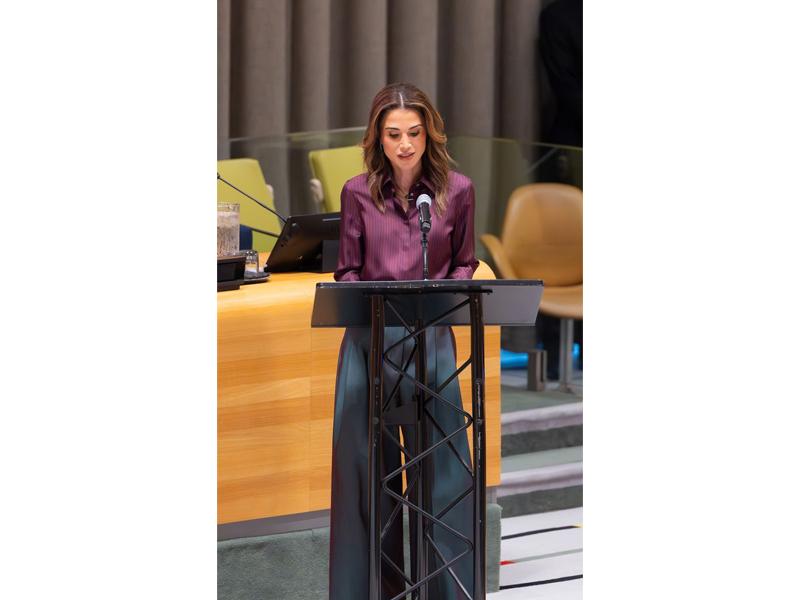Today, we collect data on almost everything.
We know that, on average, you touch your cell phone 2,617 times per day.
We know how many households in London own dogs—312,000… how many ants are in New York City—16.7 billion… how many Javan rhinos are left on Earth—62.
We even know which country had the highest proportion of Google searches for Game of Thrones. Can you guess? It was…Turkey.
But when it comes to women and girls in the developing world, too often we know almost nothing.
Millions of women aren’t even included on household surveys. They literally don’t count.
And this is a problem. Good policy decisions depend upon good data.
How can we accelerate sustainable development if we overlook half of humanity?
The SDGs represent high ideals… but they’re nothing without hard data.
Without hard data on women and girls, we’re working blind.
We know, for example, that conflicts impose a particular burden on women.
I’ve met so many refugees who’ve shared their struggles and pain.
Women like Wafa, desperately trying to feed her newborn son…
Yasmine, who pleaded, “I just want my children to go to school”…
Siham, who’d lost both her husband and home, who said “It feels like the world doesn’t see us.”
If we are to meet these women’s needs, we need to understand the realities of their lives.
Yet, we have gender-specific data for less than half of displaced people.
It’s the age of the algorithm… but when it comes to development, half the map is in shadow.
And these gaps in understanding become black holes that keep women from getting ahead—not just women in conflict zones, but women and girls worldwide.
What happens to girls who dream of getting an education, but are forced into early marriage… and fall off the radar… their horizons shrinking at the very moment boys’ horizons expand?
What happens to women who want to build businesses, but cannot get a loan, because financial institutions don’t have enough data to appreciate the importance of female customers?
What happens when governments’ labor statistics fail to capture women’s true economic contributions—the many hours women devote each day to cooking, cleaning, and caring for others… or supplementing the family income through piece work and microenterprise?
When we allow biases about women’s roles to color the kind of data we collect… we reinforce those biases… making women seem less capable, less productive, and more helpless than they are.
The good news is, there is new momentum for collecting more complete gender data.
One leader in this movement is Data2X, a champion for data equality, which works with governments, UN agencies, statisticians, and civil society to fill gender data gaps.
Data2X is spearheading research that taps big data sources to illuminate aspects of women’s lives that are otherwise left out of official statistics.
When we have the full picture, we can better focus our investments to get results.
In 2000, for example, the primary education completion rate was about 80 percent…
But because this data could be disaggregated by sex, we could see that the rate was even lower for girls than boys: 76 percent, compared to 82.
With this knowledge, the effort to get children through school could be tailored to meet specific needs…
So that by 2015, the rate had risen to 90 percent—for boys and girls alike.
That’s the kind of progress we want to see across the board.
It’s a bold new frontier… and I challenge more data scientists to map its terrain.
I also ask journalists and citizens everywhere to help hold decision-makers accountable.
If we are the future, let’s insist on a future where everyone is valued.
Let us join in saying that gender equality is only possible with data equality; that we need unbiased data in order to design the best possible policies.
And let us join in saying to Wafa, Yasmine, Siham, and women and girls everywhere:
You are not invisible. You are not just a number on a spreadsheet. You do count.
Thank you.


